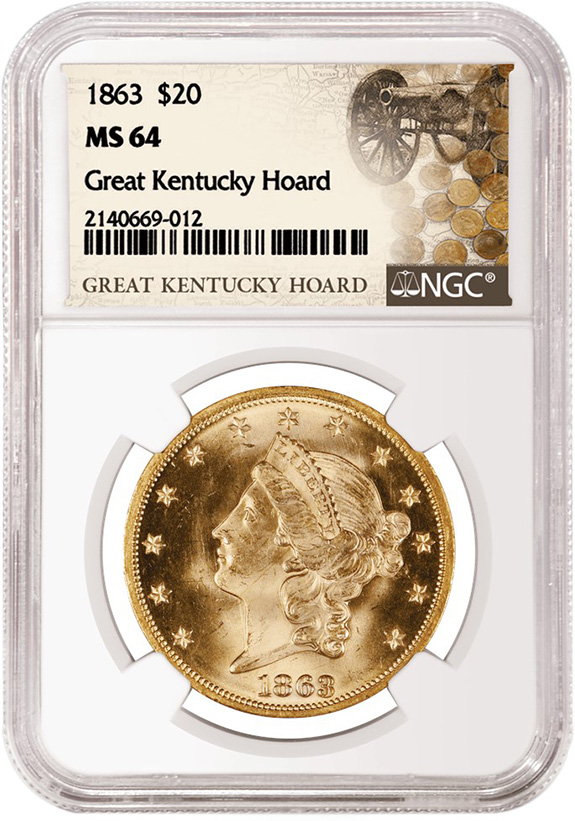A Kentucky man recently unearthed more than 700 Civil War-era gold coins that had been buried in his cornfield for 160 years. Estimated to be worth more than $2 million, the "Great Kentucky Hoard" was likely hidden from invading troops, even though Kentucky had officially claimed neutrality during the conflict.
A YouTube video captures the moment when the anonymous treasure hunter realizes the magnitude of his find.
“This is the most insane thing ever,” he says breathlessly as he chips away at the soil and more gold coins start to appear. “Those are all $1 gold coins, $20 gold coins, $10 gold coins. And look. I’m still digging them out.”
You can check out the 16-second clip at this link.
According to Numismatic Guaranty Company (NGC), which was entrusted to certify the incredible cache, the discovery includes a group of finest-known 1863 Double Eagles and hundreds of US Gold Dollars dated 1850 to 1862, as well as a small number of silver coins. The location of the find remains confidential.
“The importance of this discovery cannot be overstated, as the stunning number of over 700 gold dollars represents a virtual time capsule of Civil War-era coinage, including coins from the elusive Dahlonega Mint," stated rare coin dealer Jeff Garrett, a leading expert in US coinage. "Finding one Mint-condition 1863 Double Eagle would be an important numismatic event. Finding nearly a roll of superb examples is hard to comprehend."
He added that the opportunity to handle the "Great Kentucky Hoard" has been one of the highlights of his career.
Collectors may purchase coins from the Hoard at GovMint.com, one of the largest rare coin retailers in the country. Each coin is encapsulated with a special NGC "Great Kentucky Hoard" certification label. The cache of gold coins consists of of $1 Gold Indians, $10 Gold Libertys and $20 Gold Libertys. A single 1863-P $20 Liberty coin can command six-figures.
Despite being underground for 160 years, the gold coins still display an eye-popping luster, with most grading in Extremely Fine to Mint State (XF–MS) condition.
When the US Civil War broke out in 1861, Kentucky was literally in the middle of the conflict but didn't intend to choose sides. As neither Confederate nor Union, Kentucky declared its neutrality and positioned itself as a potential mediator between the two sides.
Despite those intentions, Kentucky saw great conflict during the war. The threat of invading forces led wealthy Kentucky residents to hide their valuables. GovMint.com speculated that by the time the Civil War ended in 1865, the individual who buried the "Great Kentucky Hoard" may have died or forgotten exactly where the hoard was buried.
Ryan McNutt, a conflict archaeologist at Georgia Southern University, told Live Science that “given the time period and the location [of the find] in Kentucky… it is entirely possible this [cache] was buried in advance of Confederate John Hunt Morgan’s June to July 1863 raid.”
McNutt pointed out that the gold coins of the "Great Kentucky Hoard" were federal currency, not Confederate currency, so it is possible the person who hid the coins had earned his money working the federal government and wanted to keep those dealings a secret from the Confederate troops.
Credit: Images courtesy of Numismatic Guaranty Company.



